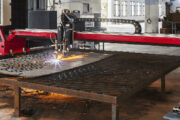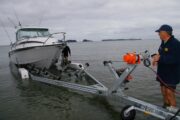Developed well of a century ago, oxy-acetylene or gas welding is the oldest form of welding still in use today. It creates welds in different types of metals by combining two gases, oxygen and acetylene, which when combusted heat the welding piece to temperatures up to 3200°C. The high temperature first melts then joins the metals together. Oxy-acetylene welding can be carried out with or without filer materials. Though you don’t get the smoothest possible welds, this welding process is widely used and more than adequate in small projects.
Uses
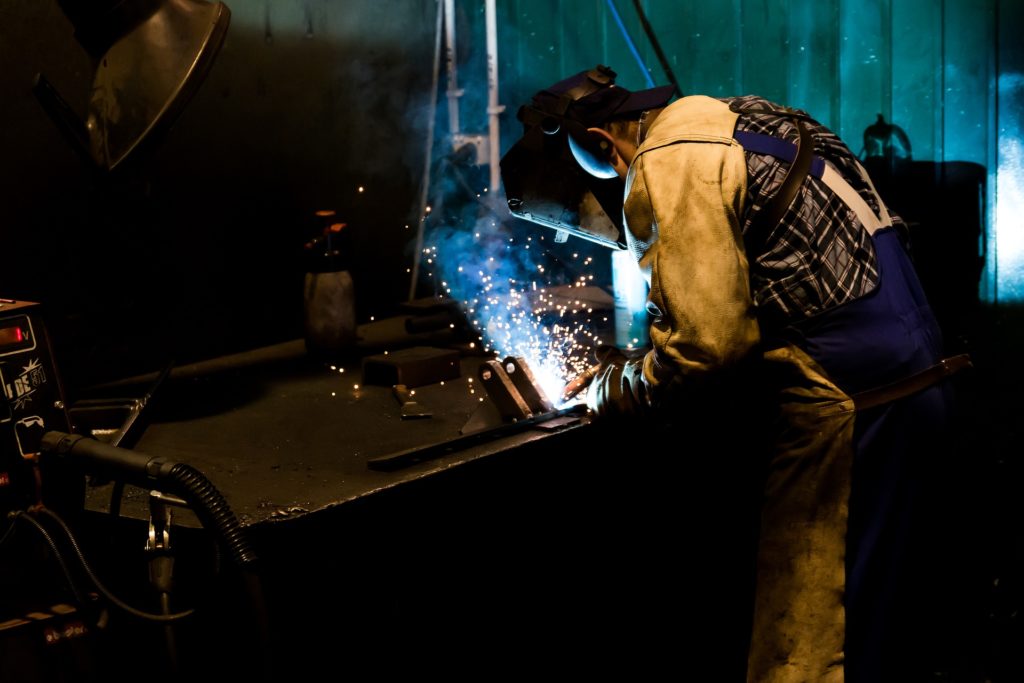
With relatively low costs and little required gear, the oxy-acetylene weld has proven to be a popular welding method, and one of the first types of welding for beginners. It is extensively used in repair work, for both welding and cutting applications, in the fabrication of sheet metal, especially in creating welds and joints in thinner metal sheets, and in the auto industry for affixing metal parts to bodywork and chassis and clearing rust. Oxy-acetylene welds are also common in manufacturing metal aircraft parts. This is a versatile welding process that allows welders to join ferrous and non-ferrous metals, like iron, aluminium, copper, nickel and others and various types of alloys, like carbon steel. Torches with different nozzles use a similar process in the repair and production of jewellery items and soldering and brazing applications.
The Gear You Need
To start in oxy-acetylene welding you’ll need the right oxy acetylene welding equipment. This consists of separate cylinders, one filled with oxygen, the other with acetylene. Pressure gauges fitted atop the cylinders display the pressure in each of the bottles and the hoses. Two hoses, one from each cylinder, are attached to the welding torch. This is a portable kit, that can be mounted on a welding trolley.
Oxygen cylinder
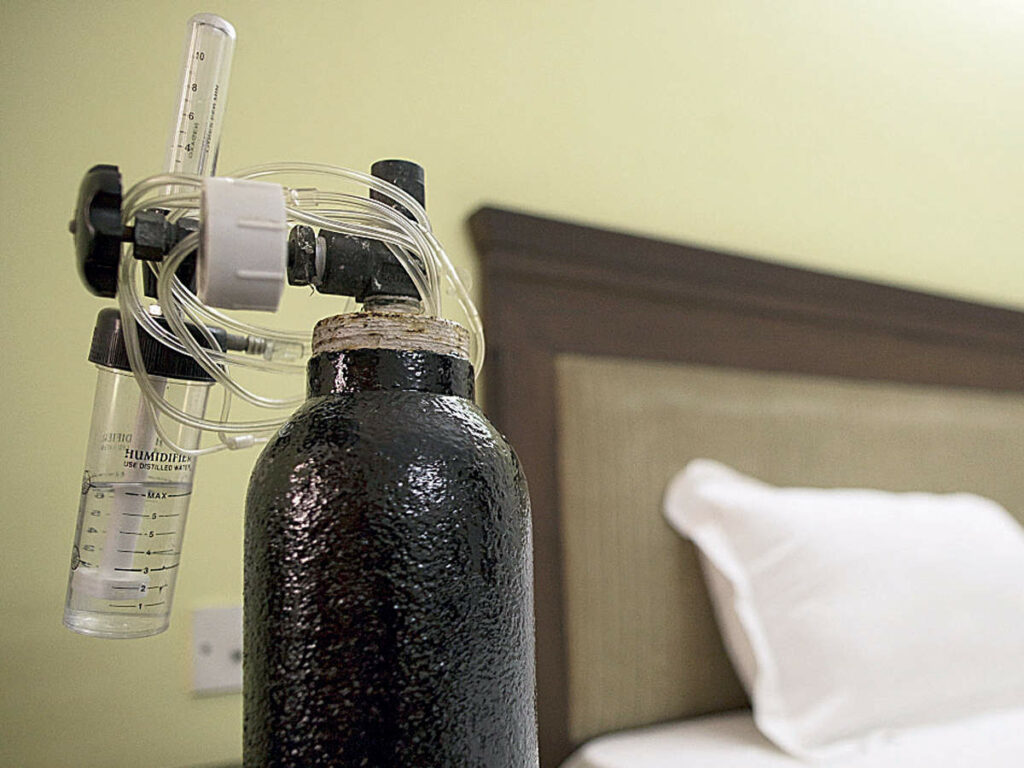
To ensure safety each type of gas cylinder is colour-coded. Oxygen cylinders are coloured black and consist of thick steel to contain the pressurised oxygen inside. There are different cylinder sizes for welding uses, with the largest “E” cylinder holding 50 litres. Two pressure gauges are found on top, along with a regulator valve that when open releases the oxygen into the hose and in the welding torch.
Acetylene cylinder
This is coloured red, again for safety reasons. It is made of the same high-quality steel as the oxygen cylinder and operates in the same way with a regulator valve and two pressure gauges.
Regulator Valves and Gauges
These are found on top of each cylinder. Opening the valves releases gas into the hose. Closing them shuts off the gas supply. The gauges show the pressure of the gases in the cylinders, and the pressure in the hoses.
Hoses and Flashback Arrestors
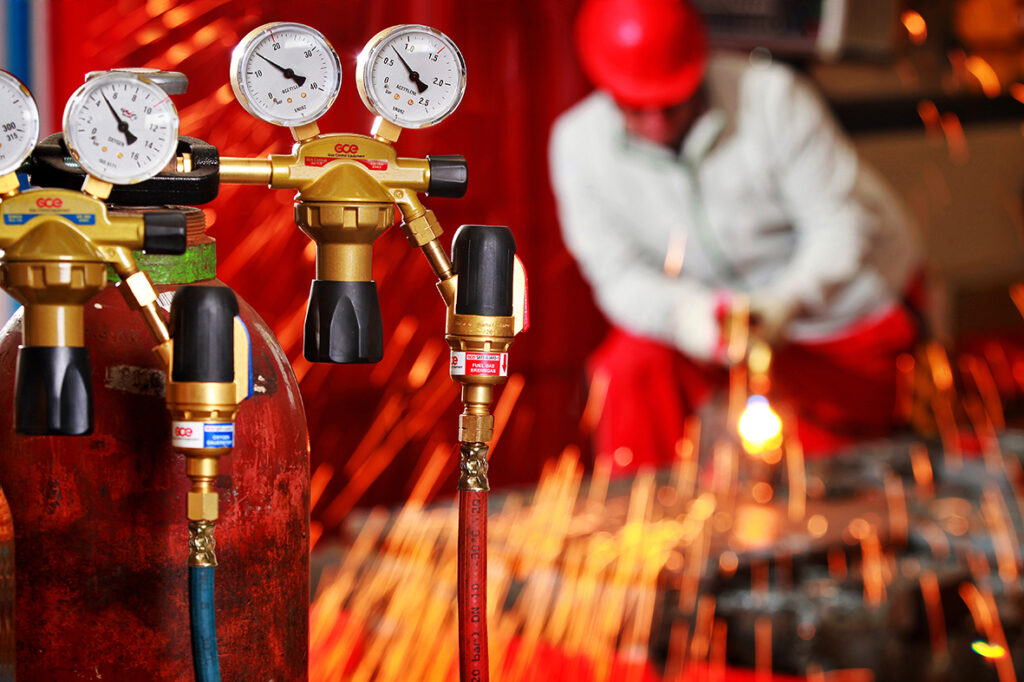
Hoses need to withstand the high pressure of the gases exiting the cylinders. These are usually sold in pairs, and are also colour-coded. Different lengths are available. To prevent gas from flowing into the opposite direction, back towards the cylinders (in what is called flashback), flashback arrestors with a non-return valve are fitted at either end of each hose. Blue or black flashback arrestors are used for oxygen, and red for acetylene.
Welding Torch
This piece of oxy-acetylene welding equipment features inlets for the two hoses lines or flashback arrestors from each cylinder. The gases are mixed in gas mixers attached to the torch handle. Welders can regulate the ratio of oxygen and acetylene through the appropriate valve to obtain the desired flame. On the opposite end of the torch, a nozzle or tip spurts the mixed gases. These need to work with extreme heat and are made of quality copper. Mixers and tips are matched in size, and different sizes are suitable for different types of welds. For cutting purposes, a cutting welding torch is fitted with a cutting head and cutting tip.
Safety Gear
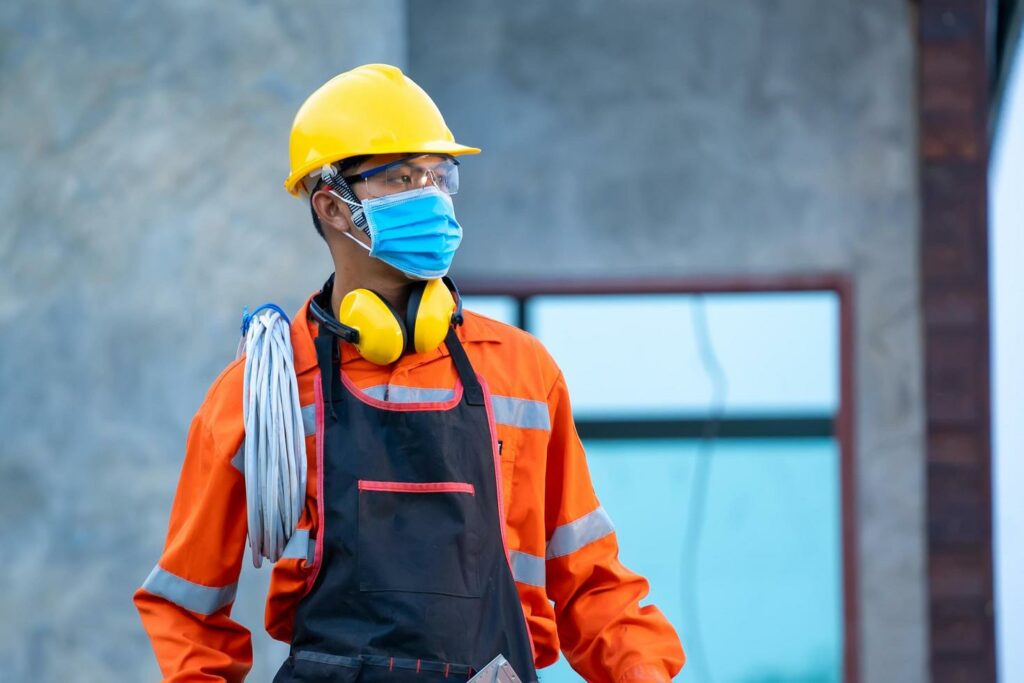
All types of welding require the proper protective gear. For oxy-acetylene gas welding, you’ll need a pair of oxy goggles, heavy-duty welding gloves, a welding jacket and apron, and leather footwear. These will shield you from potential burns, blinding and injury. For more on safety gear in welding see here.
Advantages of Oxy-Acetylene Welding
Oxy-acetylene welding is a relatively simple welding technique that is easily mastered, even by beginners. The gear is affordable as compared to other welding methods, like MIG and TIG welding, which require separate and expensive welding machines, and more importantly a power source. In this respect, oxy acetylene welding equipment is lightweight, portable and doesn’t take up too much space. The supplied safety equipment, like flashback arrestors, increase overall safety. You can fit all your gear on the simplest and cheapest welding trolleys. In addition, welders can join ferrous and non-ferrous metals, as well as use a cutting torch which comes in handy in small repairs. It is widely used in many fields, and also allows for brazing and soldering.
But as with everything, there are also disadvantages. Arc welding reaches higher temperatures, and so is better suited for thicker pieces of metal. In addition, the use of flux and filler materials here, along with less oxidation, produces smoother welds. These methods are also faster and more suitable for large scale projects than oxy-acetylene welding. However, for the intended use, oxy-acetylene is a straightforward and inexpensive method in joining two metals together.

